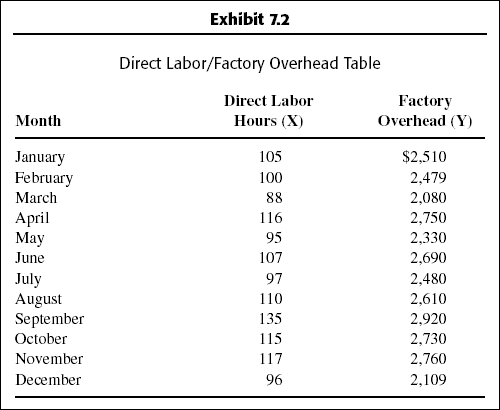7.3. High-low Method
The high-low method, as the name indicates, uses two extreme data points to determine the values of a (the fixed cost portion) and b (the variable rate) in the equation Y = a + bX. The extreme data points are the highest representative X − Y pair and the lowest representative X − Y pair. The activity level X, rather than the mixed cost item y, governs their selection.
The high-low method is explained, step by step:
Step 1: Select the highest pair and the lowest pair.
Step 2: Compute the variable rate, b, using the formula:
Step 3: Compute the fixed cost portion as:
Fixed cost portion = Total mixed cost - Variable cost
Example 1
Flexible Manufacturing Company decided to relate total factory overhead costs to direct labor hours (DLH) to develop a cost function in the form of Y = a + bX. Twelve monthly observations are collected. They are given in Exhibit 7.2.

The high-low method is simple and easy to use. It has the disadvantage, however, of using two extreme data points, which may not be representative of normal conditions. The method may yield unreliable estimates of a and b in the formula. In this example, the negative value for a is questionable. In such a case, it would be wise to drop these data points and choose two other points that are more representative ...
Get Budgeting Basics and Beyond now with the O’Reilly learning platform.
O’Reilly members experience books, live events, courses curated by job role, and more from O’Reilly and nearly 200 top publishers.

